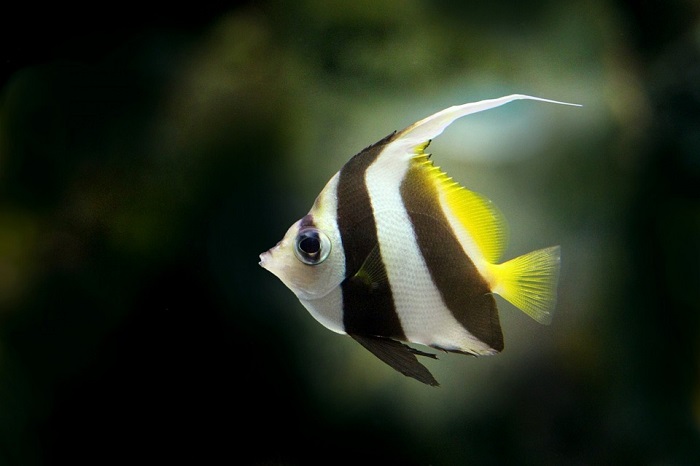Angelfish, with their majestic fins and shimmering scales, are a captivating addition to any freshwater aquarium. Their gentle nature and elegance make them a popular choice for hobbyists of all levels. However, like any living creature, angelfish are susceptible to various diseases that can impact their health and well-being. Maintaining a healthy environment and recognizing the signs of illness early on is crucial for keeping your angelfish thriving.
Causes Of Common Angelfish Diseases
Stress is a major contributing factor to illness in angelfish. When stressed, their immune system weakens, making them more vulnerable to diseases. Several factors can cause stress in angelfish, including:
- Poor water quality: Dirty water with high ammonia, nitrite, or nitrate levels can significantly stress your fish. Regular water changes and proper filtration are essential.
- Overcrowding: A tank with too many fish can lead to competition for resources, territorial disputes, and ultimately, stress. Research the appropriate stocking level for your tank size and angelfish variety.
- Incompatible tankmates: Some fish species are aggressive or fin nippers, which can harass your angelfish and cause them stress. Ensure all tank inhabitants are peaceful and compatible.
- Sudden changes in water parameters: Fluctuations in temperature, pH, or hardness can be stressful for angelfish. Make any adjustments slowly and carefully.
By minimizing these stressors and providing a healthy environment, you can significantly reduce the risk of disease in your angelfish.
Common Angelfish Diseases
Here are some of the most common Angelfish diseases:
1. Bacterial Infections
Bacterial infections are a frequent concern for angelfish. Here are some of the most common ones:
- Fin Rot: This bacterial infection attacks the fins, causing them to appear frayed, torn, or clamped. Early signs might include a white or grayish edge on the fins, which progresses to disintegration if left untreated.
- Columnaris: This bacterial disease manifests as saddle sores (depressed areas on the sides of the body) and white patches or ulcers on the skin and fins.
- Dropsy: This condition, also known as bloat, causes the angelfish’s body to become swollen due to fluid accumulation. Pinecone scales (scales sticking out) are another characteristic symptom.
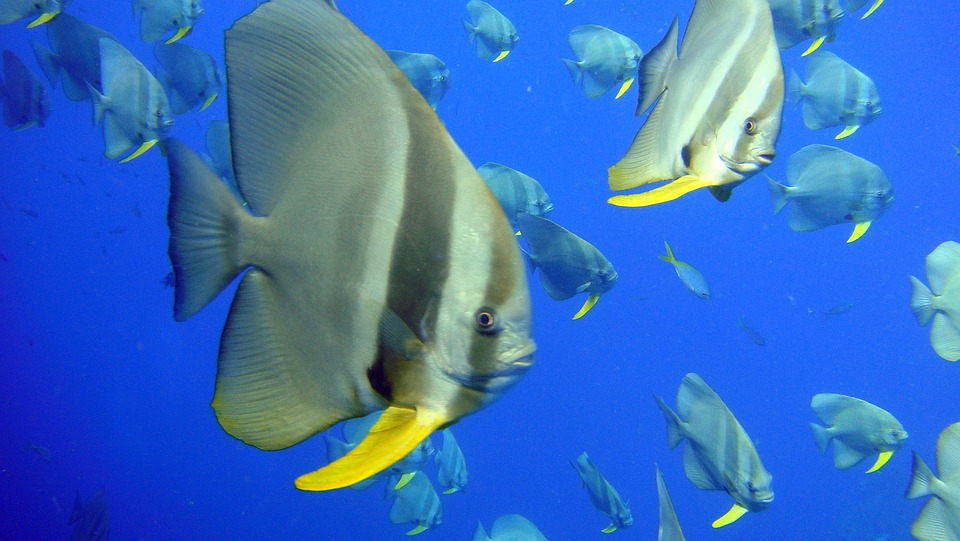
Treatment:
Fortunately, bacterial infections are often treatable. Here are some common approaches:
- Aquarium Salt: Adding aquarium salt (not table salt) to the tank can help improve gill function and promote healing. Follow the recommended dosage based on your tank size.
- Antibiotics: Various broad-spectrum antibiotics are available to treat bacterial infections. However, consult a veterinarian before using medications to ensure proper diagnosis and treatment.
- Maintain Clean Water: Regular water changes and proper filtration are crucial for removing bacteria from the tank and preventing the spread of infection.
2. Parasitic Infections
Parasites are another common threat to angelfish health. Here are two prevalent parasitic infections:
- Ich (White Spot Disease): This highly contagious parasitic protozoa manifests as white spots resembling grains of salt on the fins, body, and gills.
- Anchor Worm: These worm-like parasites attach themselves to the angelfish’s body with a hook-like appendage. They can be visible as long, hair-like protrusions from the skin or fins.
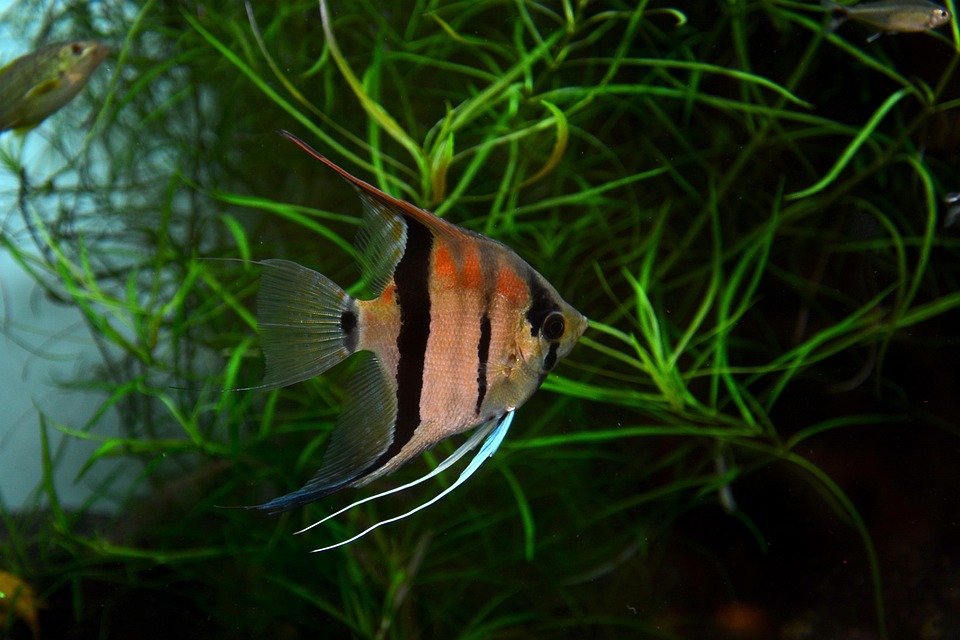
Treatment:
Several methods can help combat parasitic infections:
- Medication: Various medications are available to treat ich and other parasites. Follow the manufacturer’s instructions carefully and ensure proper tank water conditions during treatment.
- Increased Water Temperature: Raising the tank temperature can accelerate the parasite’s life cycle, making them more susceptible to treatment. However, this method might not be suitable for all fish species in the tank.
- Quarantine: Isolate infected fish in a quarantine tank to prevent the spread of parasites to healthy tankmates.
3. Fungal Infections
Fungal infections can occur in angelfish due to injuries, poor water quality, or a weakened immune system.
- Cotton Mouth: This fungal infection manifests as white, cotton-like growths around the mouth and gills.
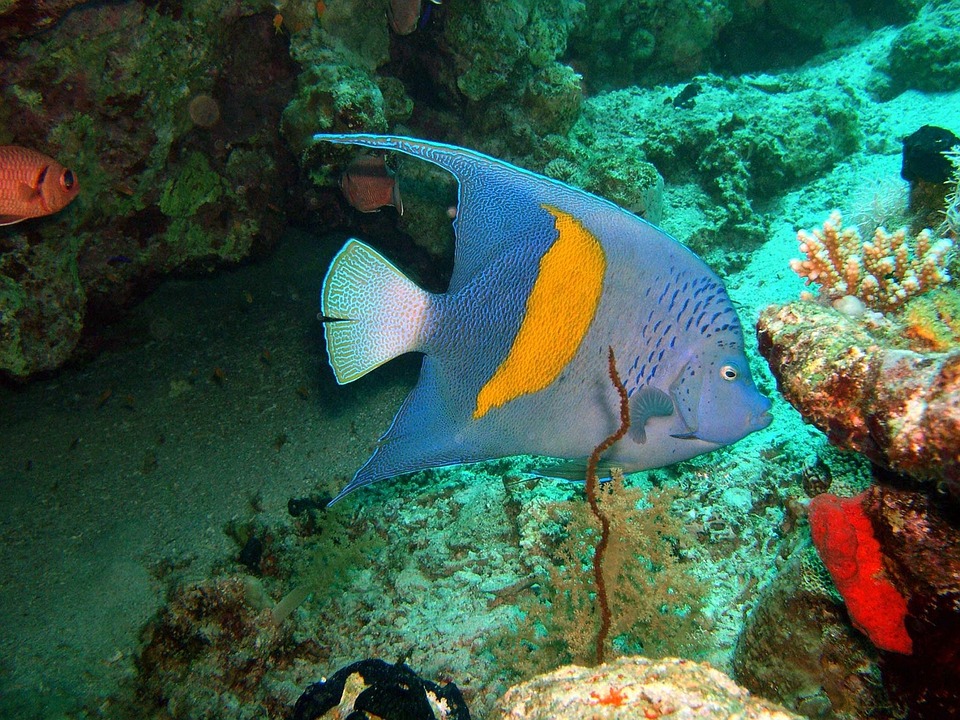
Treatment:
- Antifungal Medication: Various antifungal medications are available for treating cotton mouth. Ensure proper water quality during treatment to prevent recurrence.
- Improved Water Quality: Regular water changes and proper filtration are crucial for removing fungal spores from the tank and preventing further infection.
4. Viral Infections
Viral infections pose a significant challenge as treatment options are often limited. Here are two common viral diseases in Angelfish:
- Swim Bladder Disease: This condition can be caused by a viral or bacterial infection and affects the angelfish’s swim bladder, an organ that helps them maintain buoyancy. Symptoms include difficulty swimming, floating upside down, or struggling to stay upright.
- Angelfish Virus: This highly contagious and potentially deadly virus has no known cure. Signs include clamped fins, lethargy, white, chalky feces, and secondary infections. Early detection is crucial, but the focus is on preventing outbreaks through maintaining a healthy environment and avoiding introducing sick fish.
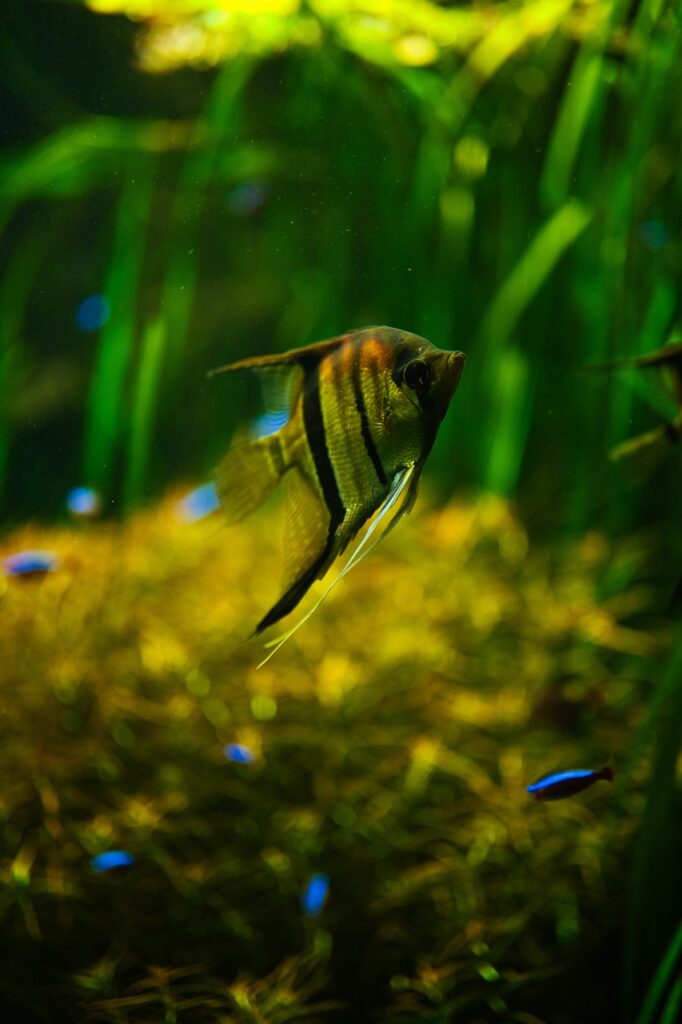
Prevention is Key for Viral Infections
Unfortunately, viral infections can be challenging to treat. Here’s why prevention is crucial:
- Maintain a Healthy Environment: Regularly changing water, maintaining proper filtration, and monitoring water parameters can significantly reduce the risk of viral outbreaks.
- Avoid Stress: As mentioned earlier, stress weakens the immune system. Provide your angelfish with a spacious, well-decorated tank with hiding places and compatible tankmates to minimize stress.
- Quarantine New Fish: Always quarantine new fish for several weeks before introducing them to the main tank. This helps prevent the spread of any potential diseases.
- Strong Immune System: A healthy diet rich in vitamins and minerals can help boost your angelfish’s immune system, making them more resistant to infections.
Signs of Illness in Angelfish
Early detection is critical for successful treatment of most angelfish diseases. Here are some general signs to watch out for:
- Clamped or ragged fins
- Loss of appetite
- Unusual swimming behavior (swimming erratically, floating upside down, difficulty staying upright)
- Swollen body
- White spots on the body or fins
- Ulcers or sores on the skin
- Lethargy
- Rapid breathing
- Flashing (rubbing body against objects)
If you notice any of these signs in your angelfish, act quickly. Isolate the affected fish in a quarantine tank and observe them closely. Research the symptoms and consider consulting a veterinarian or experienced aquarist for diagnosis and treatment recommendations.
Preventing Angelfish Diseases
Here are some key practices to maintain a healthy angelfish community:
a. Maintain Good Water Quality:
- Conduct regular water changes (ideally weekly or bi-weekly) to remove harmful ammonia and nitrite levels.
- Invest in a good quality filter appropriate for your tank size and perform regular filter maintenance.
- Monitor water parameters using test kits to ensure optimal pH, ammonia, nitrite, nitrate, and temperature levels for your angelfish species.
b. Quarantine New Fish:
Never introduce new fish directly into your main tank. Quarantine them for several weeks in a separate tank to observe for any potential diseases before adding them to the community tank.
c. Stress-Free Environment:
Provide your angelfish with a spacious tank decorated with plants and hiding places to create a sense of security. Avoid overcrowding and maintain a peaceful tank community with compatible tankmates.
d. Healthy Diet:
Feed your angelfish a high-quality diet consisting of a variety of flakes, pellets, frozen foods, and occasional live foods. A balanced diet rich in vitamins and minerals helps boost their immune system.
Conclusion
Keeping your angelfish healthy requires a proactive approach. By maintaining a clean environment, providing a stress-free habitat, and feeding them a balanced diet, you can significantly reduce the risk of disease. Recognizing the signs of illness early on and taking prompt action are crucial for successful treatment. Remember, prevention is always the best medicine. If you have any concerns about your angelfish’s health, don’t hesitate to consult a veterinarian or experienced aquarist for guidance.

